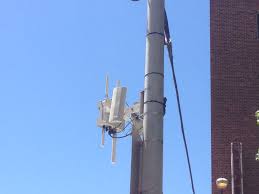 Deep inside the filing of the recent docket at the FCC that resulted in eased access to poles for 5G providers were comments that warned about the unknown health impacts of millimeter wave radiation. A group of 225 scientists from 41 countries filed comments in Dockets No. 15-79 asking that the FCC be cautious in implementing millimeter wave radiation without further scientific research into the impacts of prolonged exposure of the radiation to humans. These scientists have all published peer-reviewed papers on the topic.
Deep inside the filing of the recent docket at the FCC that resulted in eased access to poles for 5G providers were comments that warned about the unknown health impacts of millimeter wave radiation. A group of 225 scientists from 41 countries filed comments in Dockets No. 15-79 asking that the FCC be cautious in implementing millimeter wave radiation without further scientific research into the impacts of prolonged exposure of the radiation to humans. These scientists have all published peer-reviewed papers on the topic.
As scientists are wont to do, their wording sounds cautious, but in scientific language is a stern warning: “There is scientific evidence to cause concern among independent scientists, that this new infrastructure, on top of existing electrical and wireless infrastructures, will cause more harm to mankind and nature . . . The FCC needs to critically consider the potential impact of the 5th generation wireless infrastructure on the health and safety of the U.S. population before proceeding to deploy this infrastructure.”
I looked around the web to find some of the research that’s been done in this area in the past. A quick web search showed:
· The biggest impact of millimeter wave radiation is on the skin and 90% of the transmitted power is absorbed by the dermis and epidermis layers of the skin – meaning concerns about skin cancer.
· A 1994 study showed that low levels of millimeter radiation created lens opacity in rats, which is linked to cataracts.
· A 1992 Russian study found that frequencies between 53-78 GHz caused overall stress in rats that manifested by an increase in arrhythmia and other changes to heart rates.
· A 2002 Russian study found that exposure to low level 42 GHz radiation had a profound impact on the overall immune systems in rats.
· A 2016 Armenian study observed that millimeter wave radiation created changes in the cells of bacteria. They postulated that the radiation could do the same to humans. This study concluded that changes to bacteria could change result in increasing drug resistant.
· Another Armenian study showed that the impact to plants might be even greater than to animals.
· Dr. Joel Moskowitz of UC Berkeley says that the impacts of all of these other studies might be understated since 5G uses pulsed frequencies. The studies were all done using constant frequency and Dr. Moskowitz has shown that pulsed frequencies magnify the impact of radiation on organisms.
One of the handful of current uses of millimeter wave radiation is in airport scanners, which use frequencies between 24 – 30 GHz. Numerous studies have shown that the likely exposure from these scanners is safe, but made the conclusion based upon the relative short burst of exposure. The issue that has scientists concerned about 5G is continuous transmission from poles in front of homes, and perhaps eventually building some of this frequency into cellphones.
Obviously, no study has yet shown a direct health impact from pole-mounted 5G transmitters since they are just now starting to see their first deployments. The scientific evidence of the dangers of the prolonged low-level radiation has a lot of people concerned. I’ve been contacted by several groups that are starting to alert their local officials of this danger (the inbox of a blogger can be really interesting). Nationwide several local politicians have jumped on the issue.
The question these local groups are asking is if there is any way to use the health concerns to try to block 5G deployment in their neighborhoods. It looks to me like the recent FCC order for allowing small cell sites on poles doesn’t contain much ambiguity – pole owners have a federal mandate to connect the 5G devices. However, that order is being challenged in court by numerous states and cities and I imagine that the health concerns are going to be one of the issues raised in those appeals – with the primary legal tactic challenging if the FCC has the jurisdiction to override cities on pole issues.
Interestingly, Verizon has announced a timeline that seems to be going full bore on installation of 5G transmitters. The industry is usually cautious about relying on any FCC order until it’s been vetted by the courts, but perhaps Verizon is only concentrating on 5G deployment in cities that have invited them to deploy, like Sacramento. It won’t be surprising to see cities ask for an injunction against deployment until the courts decide on the issues.
